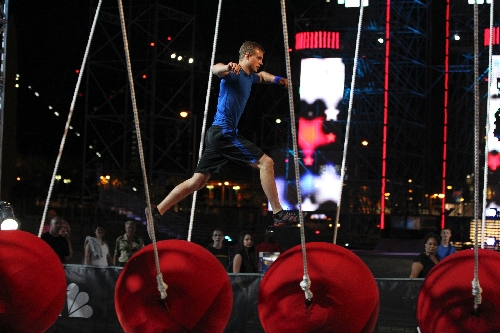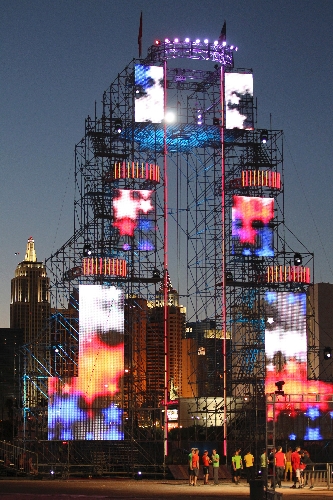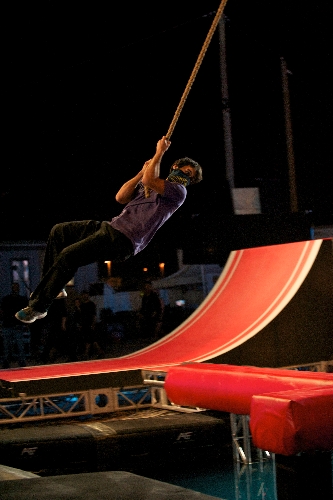‘American Ninja Warrior’ brings impossible obstacle to Las Vegas




Sometimes, it’s just better to bring the mountain to Mohammad.
Even if doing so requires a geological survey, 13 tractor-trailers, six acres of trusses, more than 60,000 bolts, some 90 days of preparation and more than 5,000 man hours in the field.
For the first time ever, Japan’s legendary Mount Midoriyama was introduced to U.S. soil – specifically to the south end of the Strip – for the finals of "American Ninja Warrior." (Coverage begins at 9 p.m. today with three hours on cable’s G4. The next day, it moves to KSNV-TV, Channel 3, where it can be seen at 9 p.m. Mondays.)
Based on the Japanese sensation "Sasuke," the series puts some of America’s finest athletes – gymnasts, weightlifters, devotees of CrossFit and parkour, even a former golfer – through a punishing obstacle course designed to test the limits of their strength, agility and endurance.
The result makes the courses on "Wipeout" look like something you’d see at a Kids Quest.
Over the years, Mount Midoriyama has been tried 2,700 times. It’s been completed just four times, twice by the same person.
"It is the world’s most difficult obstacle course. Period," says "American Ninja Warrior" executive producer Laura Civiello.
Contestants come from all walks of life, but many train for this year-round. Some even go so far as to re-create the different challenges in the woods, warehouses or their own backyards.
"There’s this sort of amazing community of people out there who share information to help train for this event," Civiello says.
And all of that effort is in pursuit of a dream that could be over in seconds. One slip, one misstep – so much as graze the water – and you’re done.
So grueling is the four-stage course, many of the 100 finalists – male and female survivors of six regional competitions, culled from thousands of applicants – never make it to stage two.
For its first three seasons, "American Ninja Warrior" sent its finalists to attempt the original Mount Midoriyama that’s been entertaining audiences in Japan since 1997. But this year, armed with the original schematics, producers re-created it here.
"As sort of a central hub," Civiello says, "with the appropriate amount of grandeur, excitement, visual appeal and just sort of as an icon for dreams coming true, if you will, Las Vegas just seemed to be a really good background."
She obviously won’t reveal how the contestants fared on Midoriyama 2.0. "It showed no more mercy than it ever has shown in Japan in the past," is as far as she’ll go.
Although it’s a major, prime-time spectacle with a $500,000 grand prize, "American Ninja Warrior" ultimately isn’t about winning.
Which is a good thing, since that almost never happens.
"It’s about determination. It’s about inspiration. It’s about athleticism. It’s about heart," Civiello says. "Sometimes it’s funny. Sometimes it’s really heartbreaking when somebody falls. But at the end of the day, there’s this sort of great tradition of triumph and loss."
Contact Christopher Lawrence at clawrence@reviewjournal.com or 702-380-4567.












